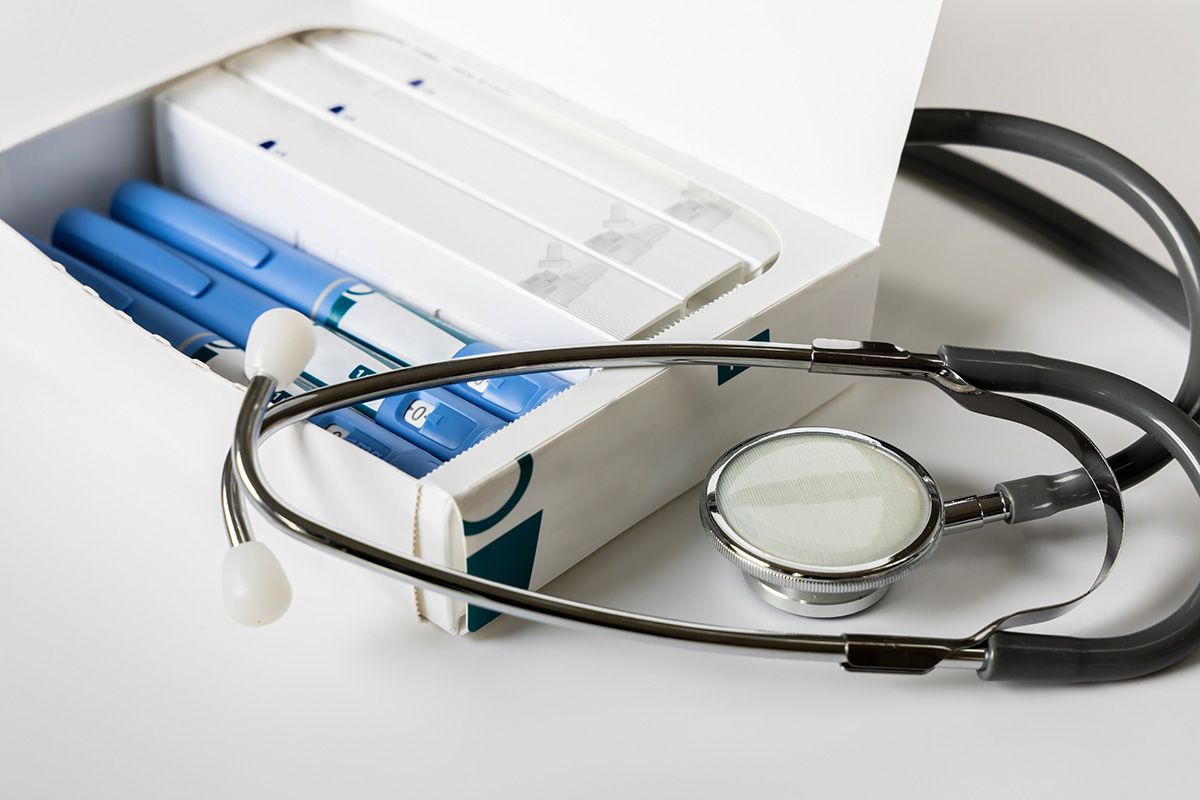Leading healthcare device stocks on both sides of the Tasman (and indeed globally) have been on a bumpy ride lately, with share prices hit significantly since July.
The culprit is the emergence of a class of obesity wonder drugs known as Glucagon-Like Peptide-1 (GLP-1s), which trade under brand names like Ozempic, Mounjaro, and Wegovy.
The impact came as newly released studies have shown the efficacy of these drugs in reducing weight in obese patients. Many people have been quick to join the dots and extrapolate the outcomes to lower demand for the treatments of medical conditions linked to obesity, such as obstructive sleep apnoea (OSA) and heart disease. This along with lower demand for fast food and other guilty pleasures, as GLP-1s can apparently reduce these cravings!
The market has been quick to discard companies potentially in the crosshairs until there is further clarity on the impact. Since the end of July, UBS’ index, which tracks a basket of healthcare industry companies that may hypothetically lose out from GLP-1s was down as much as 33%, although is now down a more modest 11%. This was a classic opportunity where the reaction was disproportionate to the risk.
Leading healthcare companies’ share prices were impacted
In terms of local companies, Fisher & Paykel Healthcare’s share price is down 3% (previously as much as 17%) and ResMed’s is down 23%, with both underperforming the share market following July. Both companies manufacture products that treat OSA. It is ResMed’s primary business, but only a minority portion of Fisher & Paykel’s.
It’s not just sleep apnoea devices feeling the heat. Australian stock exchange giant CSL Healthcare has been providing vaccine and biotechnology manufacturing there and around the world, but its share price was down as much as 14% since July, although has recovered all of this now and is actually up 6%.
A recent study showing GLP-1s’ effectiveness in treating obesity-related kidney disease has investors worried about the future of their Vifor business which treat this illness. It accounts for around 15% of CSL’s revenue.
While these new drugs certainly have the potential to reduce obesity in the future, there is a wider range of factors at play. Despite the concerns, the longer-term prospects for these leading Trans-Tasman healthcare companies remains positive.
The actual impact on the OSA market by the ‘wonder drugs’ is yet to be determined.
ResMed has estimated at its quarterly earnings release that in a high adoption case, GLP-1s will reduce its addressable market in 2050 from 1.4 billion to 1.2 billion patients (from around 1 billion today). It currently has only 22 million connected devices currently and expects this could be around 109 million by 2050, so it is banking on being able to grow volume around five-fold, despite the market remaining only around 10% penetrated. In large part this is because OSA patients go largely undiagnosed, so the runway for growth remains significant.
Will weight loss drugs live up to the hype?
It’s true that fewer people battling with obesity in theory should mean fewer people needing these masks. However, the reality is global obesity rates continue to climb and could still increase for decades to come, in spite of the GLP-1s.
Setting aside GLP-1s, a study in the New England Medical Journal expects the US obesity rate to increase from around 42% nowadays to 49% by 2030. It’s also important to note that while there is a strong link, obesity isn’t the only cause of sleep apnoea.
The drugs are also facing significant barriers to access, like price and availability, which may be around for years or even decades. There is also the risk of nasty side effects.
While results may be impressive in clinical trials, usage compliance tends to be much lower in the real world. One 4000 patient real-world study on Wegovy suggested around two-thirds may drop out from using it and most of the remainder do not adhere to the treatment regime properly.
Long-term prospects for healthcare device companies are still strong
The common thread between these examples is that they are all fundamentally high-quality companies with strong leadership teams, treating very real health issues for which GLP-1s will not be a panacea.
Yes, GLP-1s are an exciting and ground-breaking innovation, but it’s important to put the breakthrough in context and keep the bigger picture in mind. New Zealand and Australia’s leading medical device companies will continue to play a leading role in treating patients in need for many years to come.
After “shooting first and asking questions later”, the focus will soon turn to whether these companies are actually seeing any signs of slower growth because of GLP-1s, to justify the knee-jerk reaction we have seen.
Figures provided are correct as at 20 December 2023, but are changing over time. A version of this article was originally published in the NZ Herald.
Talk to us
If you’ve got questions about your investment, the team at Fisher Funds are here to help. Please contact us or get in touch with your adviser.

